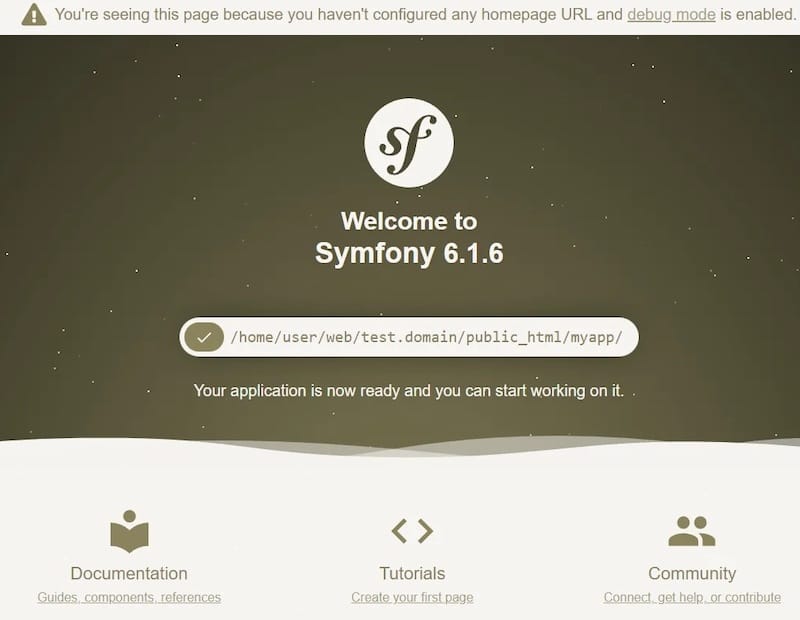How To Install Symfony Framework on Ubuntu 22.04 LTS

In this tutorial, we will show you how to install Symfony Framework on Ubuntu 22.04 LTS. For those of you who didn’t know, Symfony is a powerful and popular PHP web application framework that provides a set of reusable components and tools to streamline development. It offers a robust architecture, enhanced performance, and excellent documentation, making it a top choice for building scalable and maintainable web applications.
This article assumes you have at least basic knowledge of Linux, know how to use the shell, and most importantly, you host your site on your own VPS. The installation is quite simple and assumes you are running in the root account, if not you may need to add ‘sudo‘ to the commands to get root privileges. I will show you the step-by-step installation of the Symfony Framework on Ubuntu 22.04 (Jammy Jellyfish). You can follow the same instructions for Ubuntu 22.04 and any other Debian-based distribution like Linux Mint, Elementary OS, Pop!_OS, and more as well.
Prerequisites
- A server running one of the following operating systems: Ubuntu 22.04, 20.04, and any other Debian-based distribution like Linux Mint.
- It’s recommended that you use a fresh OS install to prevent any potential issues.
- SSH access to the server (or just open Terminal if you’re on a desktop).
- A
non-root sudo useror access to theroot user. We recommend acting as anon-root sudo user, however, as you can harm your system if you’re not careful when acting as the root.
Install Symfony Framework on Ubuntu 22.04 LTS Jammy Jellyfish
Step 1. First, make sure that all your system packages are up-to-date by running the following apt commands in the terminal.
sudo apt update sudo apt upgrade sudo apt install lsb-release ca-certificates apt-transport-https software-properties-common
Step 2. Installing PHP on Ubuntu 22.04.
By default, the PHP is not available on Ubuntu 22.04 base repository. Now run the following command below to add the Ondrej PPA to your system:
sudo add-apt-repository ppa:ondrej/php
After the repository was added, Update the APT index then install PHP 8.1 using the following command below:
sudo apt update sudo apt install php8.1 php8.1-common libapache2-mod-php8.1 php8.1-cli
To verify the PHP installation, run the following command:
php --version
For additional resources on installing PHP, read the post below:
Step 3. Installing Symfony Framework on Ubuntu 22.04.
By default, Symfony is not available on the Ubuntu 22.04 base repository. Now run the following command below to download the latest version of the Symfony installer to your system:
wget https://get.symfony.com/cli/installer -O - | bash
Next, add the Symfony installation path to the PATH user using the following command:
export PATH="$HOME/.symfony/bin:$PATH".
And apply the changes by running:
source ~/.bashrc
At this point, you can use the following commands to configure your email and username in Git:
git config --global user.email "Your_Email_Address" git config --global user.name "Your_User_Name"
For additional resources on installing Git, read the post below:
Finally, you can create a new project by executing the following command:
symfony new your-project --full
You can run the following command to start the local webserver:
cd your-project symfony server:start
Output:
[OK] Web server listening The Web server is using PHP CLI 8.1 http://127.0.0.1:8000
Step 4. Accessing Symfony Framework Web Interface.
Once successfully installed, open your web browser and access the Symfony Framework using the URL http://your-IP-address:8000. You will be greeted with the default Symfony welcome page, which confirms that your application is running successfully.

Congratulations! You have successfully installed Symfony. Thanks for using this tutorial for installing Symfony Framework on Ubuntu 22.04 LTS Jammy Jellyfish system. For additional help or useful information, we recommend you check the Symfony website.